Your Cart is Empty

When you consider what type of engagement ring to buy, you will of course consider the look and style of the piece. But equally important is the type of setting that holds the center stone. The right setting will protect and enhance your stone; the wrong setting can cause the stone to fall out or get damaged. Learning about the different types of gem settings will help you decide which engagement ring is best suited to the cut of diamond you like, and whether it will withstand everyday wear, or if it should be worn with extra care.

Style: Classic
Best Suited For: Nearly any cut of gem
The most common type of setting is the prong setting. Prong settings can vary greatly, but essentially involve individual prongs of metal surrounding the stone and bent slightly over to hold the gem in place. This design does the job of keeping the gem in place, while still letting a lot of light into the stone. Usually prong settings have either four or six prongs, but may have more. Be aware that although having more prongs makes the gem more secure, it also makes resetting the gem more laborious, and thus, more expensive. No matter the quality of the ring when you first buy it, it is likely you will eventually have to bring it to a jeweler for repair, so keep in mind how much you are willing to invest in the future for prong maintenance.
Prongs can be a variety of styles: round or standard, claw or talon (coming to a point), double or split (two prongs side by side at each point), and fishtail (triple point picture corner style prongs). Another type of prong is the V-prong, which is shaped like a 90 degree angle. This style is necessary for square and princess cut diamonds, where the sharp corners of the gem need to be protected.
Style: Retro/Mid-Century
Best Suited For: Round cut gems
A specialty type of prong setting (usually fishtail) creates the illusion that a diamond is bigger and squarer than it is. This is called an illusion setting, and is often seen in Retro and Mid-Century era engagement rings. These rings are very popular, because in addition to maximizing the impact of the diamond, illusion settings also provide a nice level of protection. Along with the traditional fishtail prong illusion settings, there are also pavé cluster and halo settings that create the illusion of one large diamond, rather than multiple smaller ones.
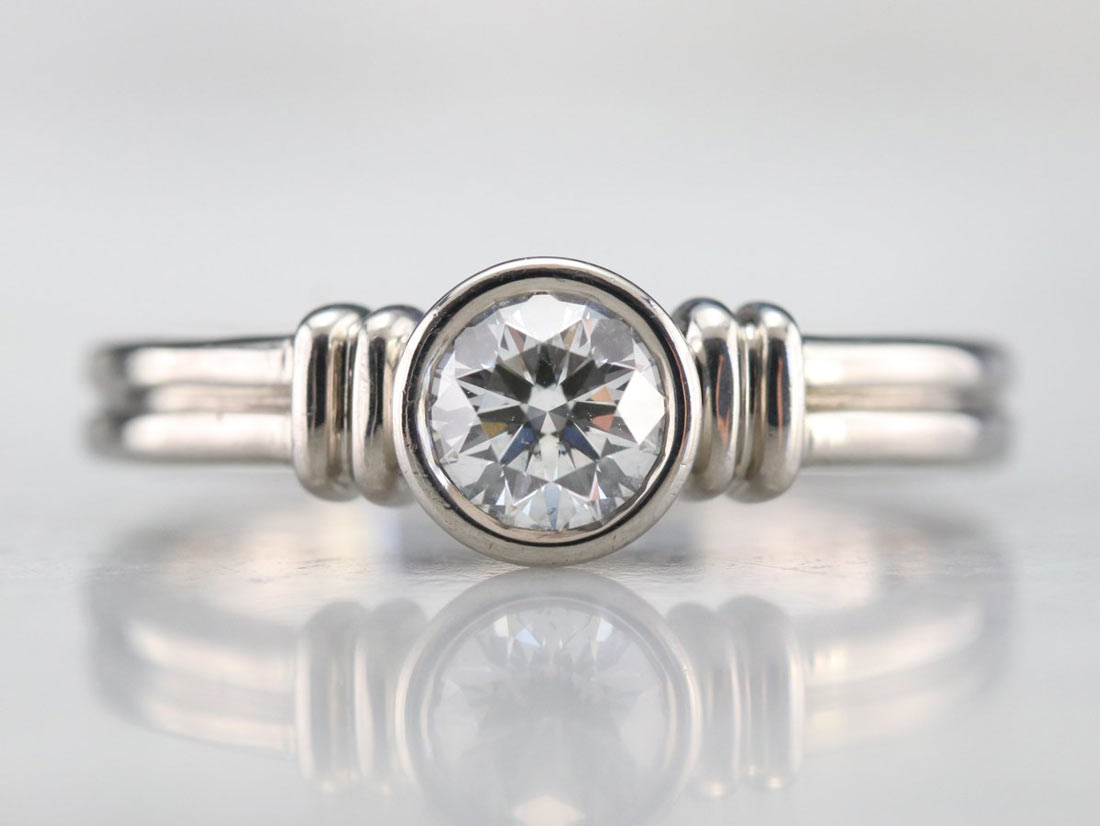
Style: Modern
Best Suited For: Nearly any cut of gem
Bezel settings are perhaps the most protective of all the ring settings. A thin layer of metal completely surrounds the gem, protecting it from all sides. If your diamond has a lot of fractures or inclusions, bezel settings are an excellent choice to prevent everyday wear and tear from knocking and cracking the stone. Bezel settings also give the diamond a nice frame which can complement, in the case of platinum or white gold, or contrast, in the case of yellow or rose gold. When the bezel setting surrounds part or most of the gem, it is called a partial or semi bezel.
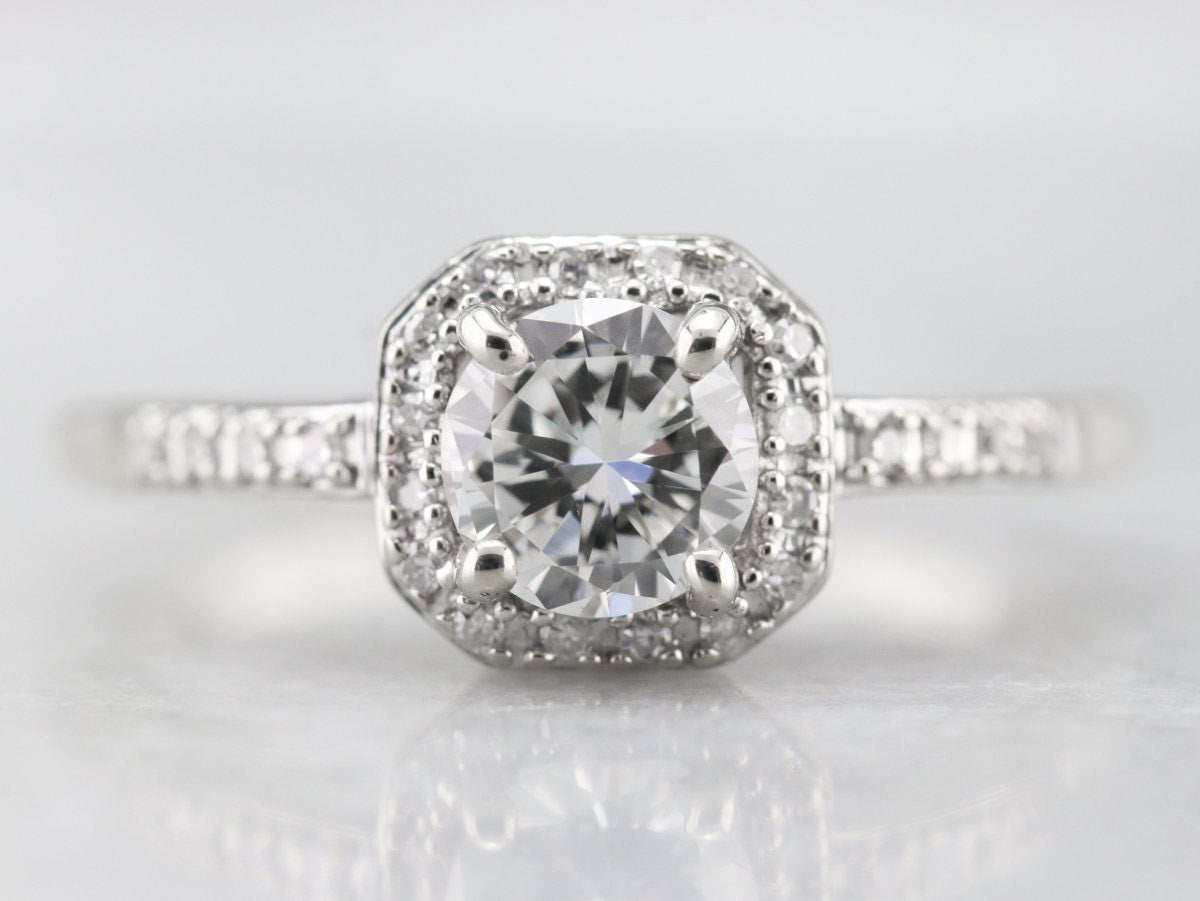
Style: Glamorous
Best Suited For: Round, square, cushion, or emerald cut gems
In a halo setting, the larger gemstone is surrounded by a halo of smaller gemstones. Similar to a bezel setting, this frame of smaller gemstones offers some protection to the center stone. Halo settings have been around for centuries, and today are as popular as ever. When a diamond is paired with a diamond halo, it can give the illusion of one big, glittering stone. Halo engagement rings are perfect for those looking for a more glamorous design.
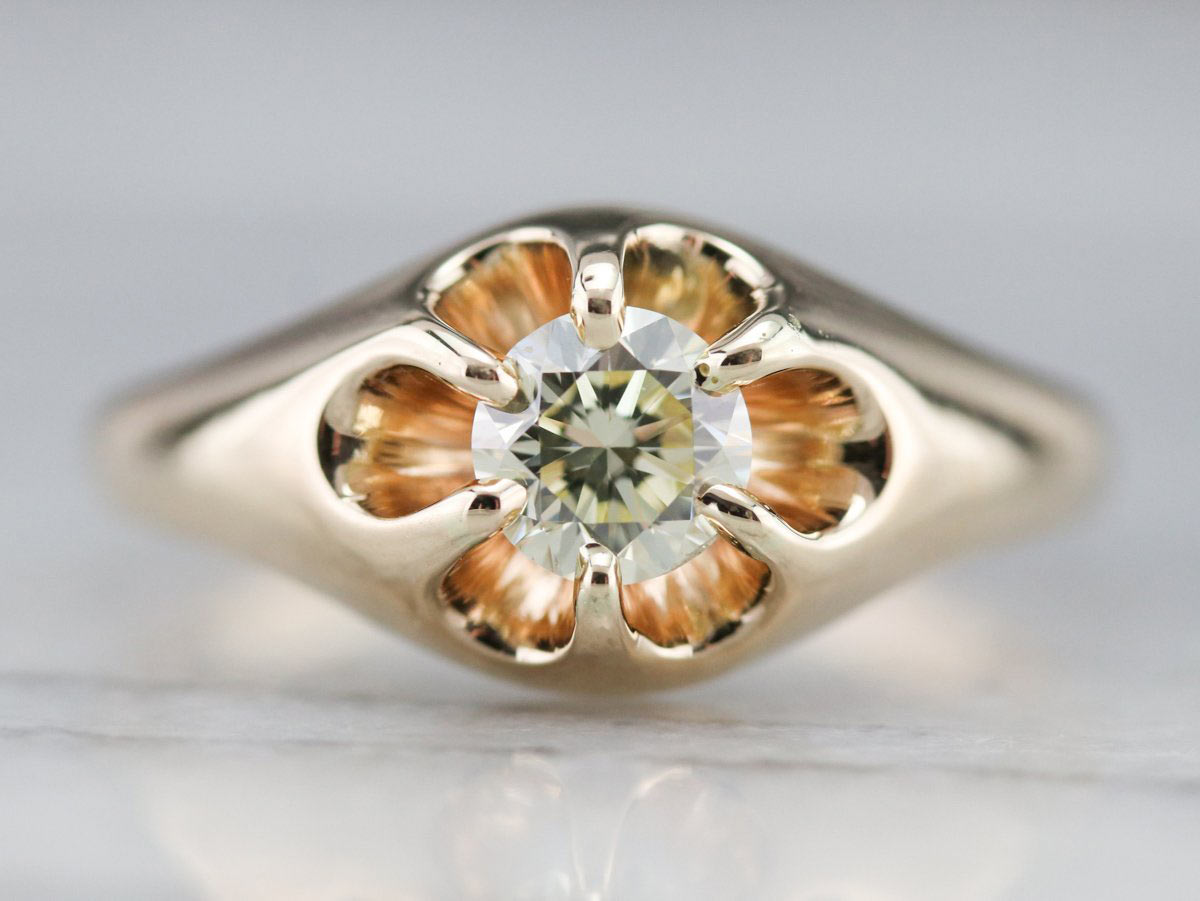
Style: Victorian
Best Suited For: Round or cushion cut gems
Named after Thomas Belcher, an American jewelry designer from the 19th Century, the belcher setting features prongs built into the shank of the ring. U-shaped curves separate the prongs and create a petal like design. This type of setting keeps the gem low and protected, sitting flush with the rest of the ring. You will see belcher settings most often in Victorian Era engagement rings.

Basket style heads often accompany prong settings. Basket designs provide cross support for the vertical prongs, adding structure and strength, while still letting light through.

A peg head has prongs that meet the shank in a V shape, lifting the gem above the ring. Peg head settings tend to have a higher profile, so they are good to pair with a wedding band, which can sit next to the ring below the stone.
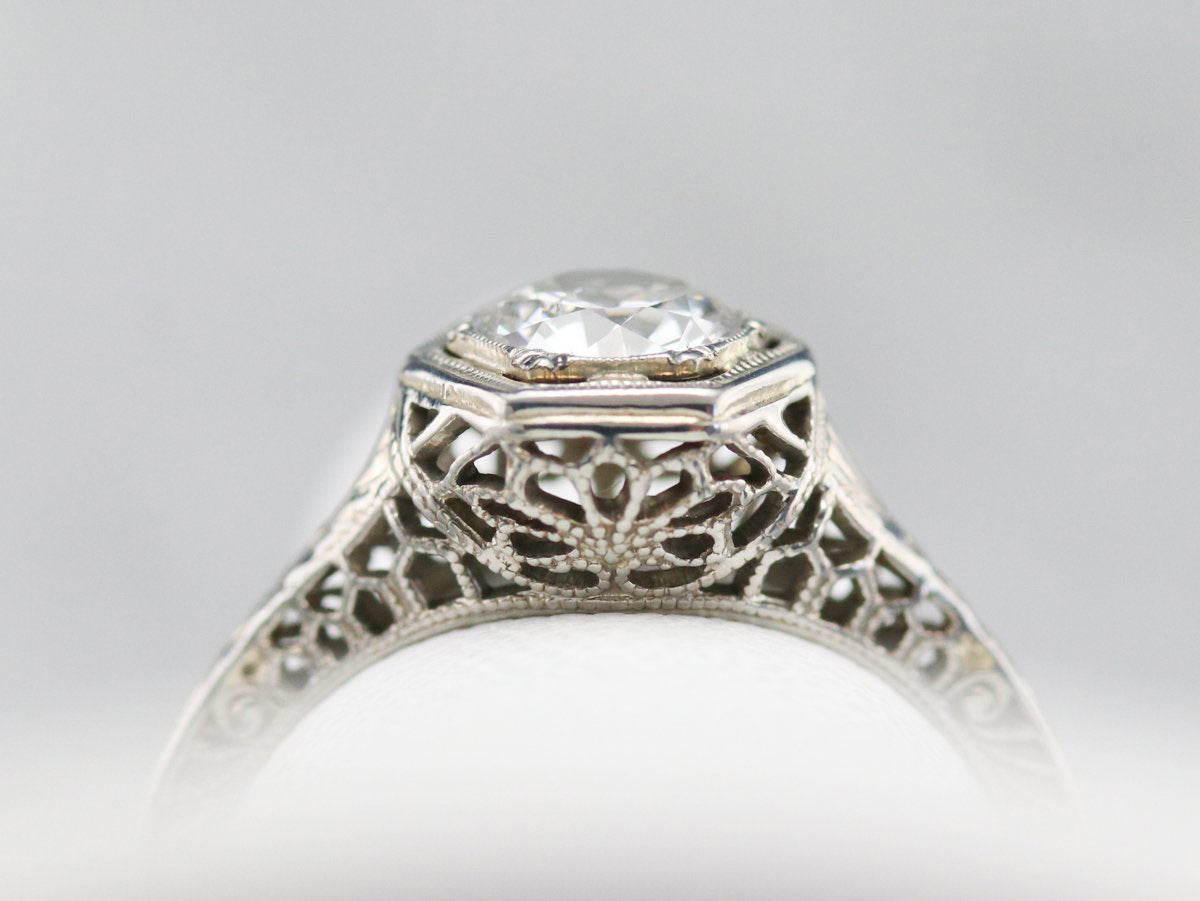
Common in Art Deco engagement rings, filigree settings create a lightweight, airy look. Ornate and detailed, filigree settings allow the diamond to set low in the ring, while still allowing light to flow into the gem.
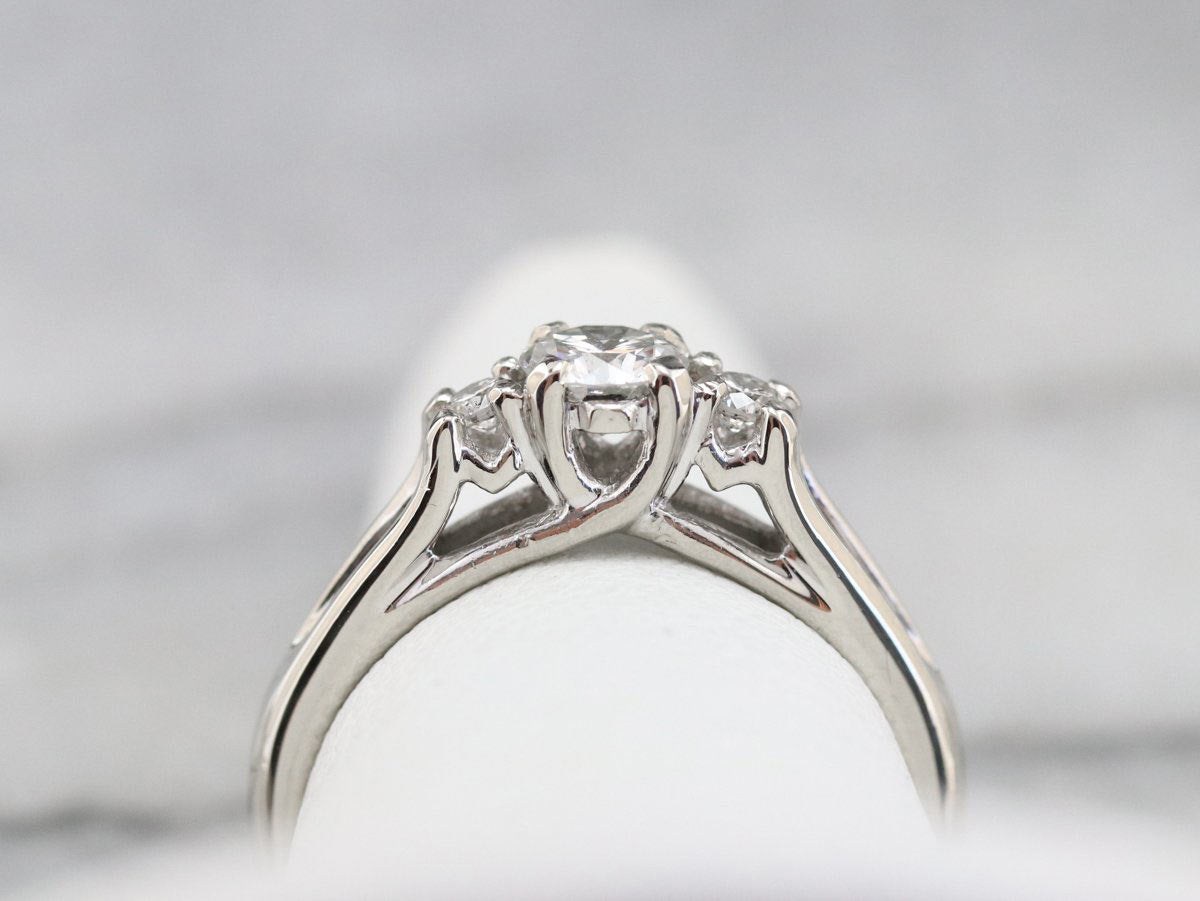
Trellis settings are more modern, and have interwoven prongs that create a decorative look in the profile of the ring. Similar to basket settings, this design creates structure while still allowing light in.

Cathedral settings, when viewed in profile, have an arching structure that looks like the vaulted ceiling of a cathedral. The shanks split, leading to the head of the ring and supporting the gem setting.
Although you don't need to be an expert in engagement ring terminology to find the perfect ring, having a general knowledge of these terms and styles will help you choose something that makes sense for your lifestyle. See these styles in action by shopping our diamond engagement ring collection.

